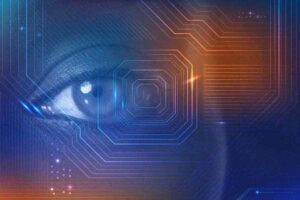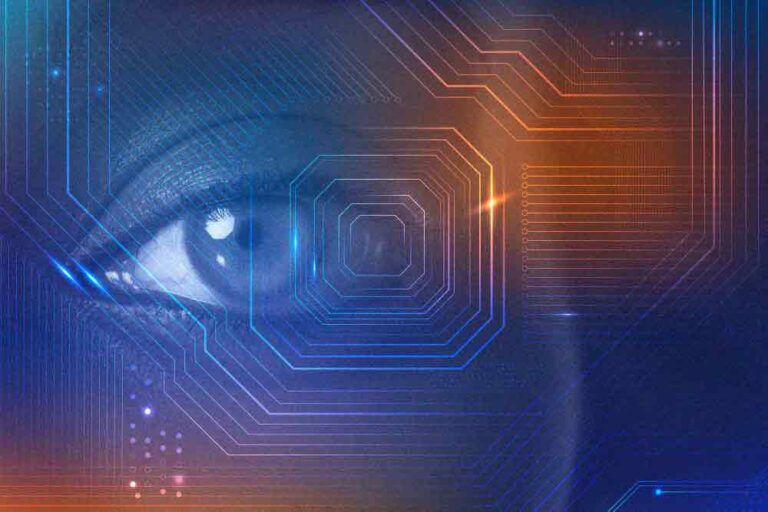Computer vision has become a remarkable tool to tackle the challenges of business surveillance. Because of that, it can monitor business continuously without experiencing exhaustion or human constraints. Computer vision can understand customer behavior, operational efficiency, and stock availability. This happens by mining complex visual data with sophisticated pattern recognition, object detection, and visual analysis technologies.
In other words, this technology not only has a careful eye that monitors every detail. It also has an intelligent brain that uses this data to generate useful knowledge. Computer vision allows companies to adopt a more proactive and adaptive level of management. Although we as humans may be limited in terms of constantly observing and analysing.
Computer vision provides an unparalleled ability to detect patterns, predict trends, and capture nuances. Which that may be missed by the human eye wherever you go. We’re going to discuss a variety of topics about Computer Vision in this blog. This including the definition, how it works, future, use, and the right product to implement Computer Vision. Let’s swing together!
What Is Computer Vision?

Computer Vision is a branch of computer science that aims to give machines the ability to “see”. Not only that, but to understand the world through the processing of visual data. The primary purpose of computer vision is to enable computers to recognize. Not only that interpret and respond to visual information such as images or videos.
Techniques such as pattern recognition, image segmentation, and feature extraction can achieve this. With the support of artificial intelligence and machine learning, computer vision technology has undergone rapid advances. Which this enable systems to learn and improve their performance over time.
How Does It Work?
There are several ways computer vision works, including:
- Photography. The process begins with taking pictures or videos from various sources, such as digital cameras, surveillance cameras or medical images.
- Preprocessing. Visual data often requires preliminary processing before further processing.
- Feature extraction. Next, important features of the image are extracted. This can include sound removal, color normalization, or increased contrast. It can include the edges, colors, textures, and shapes of the object depicted.
- Segmentation. This process divides the image into smaller and more important parts, which helps find different objects or areas.
- Object recognition. In this phase, the computer tries to recognize patterns or objects in the image. In image processing, machine learning models like Convolutional Neural Networks (CNN) can do that.
- Classification. The known object is then categorized into a specific category or label. This can include identifying faces, vehicles, or other objects.
- Object detection. Computer vision can detect the location of objects in images other than identification. It helps to understand an object in a particular context.
- Object tracking. This process is often used in surveillance or motion analysis applications because it allows the system to track the movement of objects over time.
- The system can provide interpretation or make decisions after processing visual information.
The Future Of Computer Vision
The future of Vision Computer promises great progress in a variety of industries. Computer vision systems are becoming more intelligent and accurate. This is in understanding visual contexts thanks to advances in image processing, pattern recognition, and in-depth learning. More sophisticated applications, such as better facial recognition, autonomous navigation on vehicles, and deeper understanding of contexts in complex environments. It will be achieved through a combination of artificial intelligence (AI) and machine vision capabilities.
Combining computer vision with technologies like augmented reality and virtual reality will make the user experience more interactive and immersive. Furthermore, the role of Computer Vision in supporting smart ecosystems will be strengthened by more Internet of Things connectivity (IoT). More sophisticated medical devices, automated supply chain management, and intelligent surveillance systems are some examples of applications that can be realized.
The future of Computer Vision also promises the development of more energy-efficient and efficient models, which will enable wider and cheaper applications across industries. Thus, these technological developments will continue to shape the innovation landscape and play a vital role in creating an increasingly intelligent and connected world.
The Applications
- Health and medical care. In health and medicine, the application of computer science is crucial. Technologies such as machine learning and massive data analysis help process and analyze medical data. This technology also helps in diagnosing diseases, predicting disease spread, and designing more personalized treatments. In addition, real-time patient monitoring, management of chronic diseases, can be achieved through technologies connected to computer systems.
- Science of Computer. This also crucial to education. Machine learning software, e-learning platforms, and educational applications have transformed the way we get and understand information. Individual needs can be met through learning recommendations tailored to intelligent systems. This allows learning to be more interactive and effective. Besides, this technology helps improve computing skills, preparing future generations to face the challenges of the digital world.
- Accessibility and Transportation. Computer Science is vital for traffic management, route optimization, and development of autonomous vehicles in the transport sector. Smart algorithms can reduce congestion, improve transport efficiency, and even improve road safety. In addition, connected sensors and monitoring systems enable more efficient fleet management, reducing negative environmental impacts, and developing sustainable solutions.
- Finance and Business. The development of trading algorithms, risk analysis, and automated financial management is a major contribution. This contribution is from computer science to the world of finance and business. Blockchain technology, which is a branch of computer science, produces advances in supply chain management and transaction security. In-depth data analysis and artificial intelligence are also used to find market trends. Not only that, but it could predict customer behavior, and improve the efficiency of business operations.
Our Products to Support the Computer Vision Revolution!
- Object Storage Service (OSS). This is an unlimited storage solution that supports Computer Vision, has unrestricted capacity and a 99.995% availability. REST API and language-compatible SDKs allow users to manage data easily and securely. With high performance, low cost, and disabled capabilities, this is the perfect choice. A perfect choice for Computer Vision applications that require reliable and efficient storage.
- Cloud Container Engine. CCE supports Computer Vision with integrated cloud services and container automation with Kubernetes. High performance, networking, and storage, as well as support for diverse computing architectures, CCE ensures high availability. Not only that, but it makes container management easier with configuration automation. Besides, this reliable platform has Kubernetes certification and is supported by the Cloud Native Computing Foundation (CNCF).
- AI Chatbot. Our intelligent Chatbot Studio with Computer Vision support maximizes customer interaction. You can create and train chatbots with a simple interface without learning encoding. These solutions are the best choice because of fast response, reduced operating costs, and increased customer satisfaction. Our chatbots can operate worldwide thanks to our translation machine that supports more than 150 languages. By creating ready-to-use chat scripts and user-friendly APIs, bot-building on various channels of communication. This is such as messages, apps, websites, SDKs, and social media, becomes faster and more effective.
If you want to read other articles about our products, you can visit our website Indonesiancloud.com, and our VPS website cloudhostingaja.com. If you have further questions, don’t hesitate to contact us. See you in another article.

